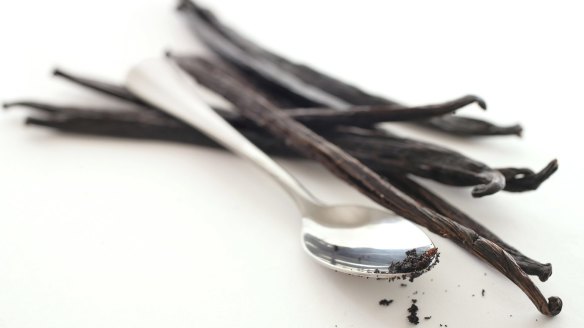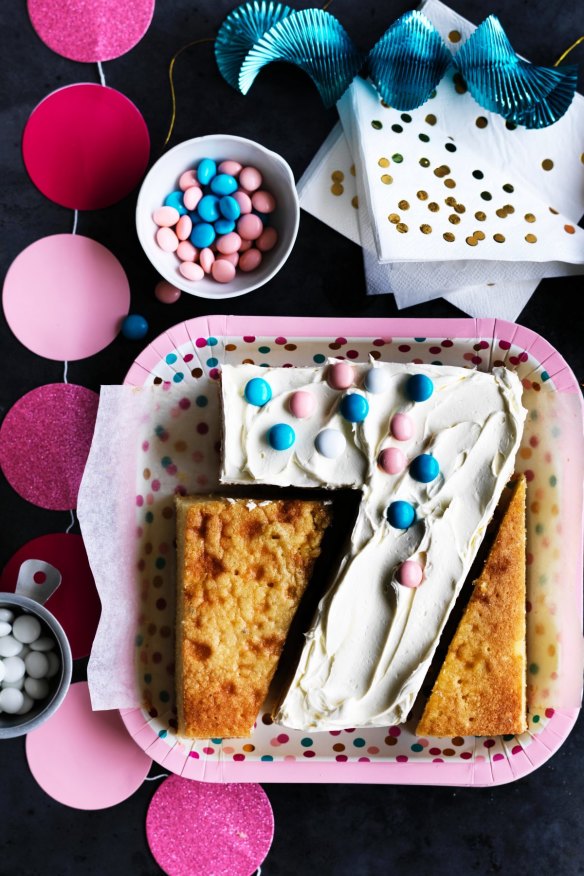A guide to baking with vanilla beans, extract, essence and flavouring
Updated , first published

Somewhere along the line, vanilla became synonymous with bland or ordinary.
Which is just plain wrong.

Blame it on a world of chunky Ben & Jerry's ice-cream and red velvet Oreos, where "more" sounds like "better," where fake flavours bolster profits.
It's true that vanilla's aroma, flowery and fragrant, usually gets top billing before its taste, generally described as rich, complex, woodsy or smoky. In any case, decidedly not plain.
Still, in many ways, one of vanilla's best traits is its ability to amplify other flavours such as chocolate, caramel, custards and more, which explains why it turns up in so many sweet recipes.
Think of vanilla as a baker's best friend forever.
The world of vanilla isn't particularly complicated. And yet shelves stocked with vanilla extract, vanilla paste, vanilla beans, vanilla extract and vanilla flavouring can make it seem so.
There's a role for each. It depends on what you're seeking.
Vanilla originates as a long, thin pod on a tropical climbing orchid, the fruit of a flower that blooms for just one day. Just one.
Pollination must happen on that day, or no pod. That's led to delicate hand-pollination, which accounts for vanilla's prices. Plus, the entire cycle of ripening, harvesting, drying, curing and processing takes months.
Vanilla extract and vanilla essence is the result of these vanilla pods being soaked in alcohol and blended with water. Some brands also add sugar. Check the labels. (Don't want alcohol? Use an alcohol-free imitation vanilla flavouring.)
Make your own
With vanilla pods, you can make homemade vanilla extract – as some serious baking books urge. Most recipes call for several vanilla bean pods added to 230ml of alcohol, often flavourless vodka, although you can also use bourbon, brandy or rum. Slice open the beans, scrape out the seeds, then add everything to alcohol in a glass jar. Cover and steep for at least a couple of months.
Vanilla pods also are great for infusing white sugar with flavour and aroma. Just bury a pod or two in a 2-cup container of sugar and use as you would plain sugar.
Vanilla paste is for when you want what you're making to show flecks of actual vanilla seeds.
Vanilla comes in several varieties, with many of the best extracts using pods from Madagascar, valued for their rich and complex flavour. Tahitian vanilla is more floral in nature, while Indonesian vanilla has smokier notes. Mexican vanilla is considered the spiciest of the varieties.
You can order or buy specific vanillas, but many supermarket brands don't specify origins other than to guarantee that the extract is pure.
All in all, the differences can be subtle, especially when combined with other flavours in a baked good.
Which brings us to imitation vanilla flavouring, and a discussion about heat.
Recipes for custards, fillings and puddings often say to add vanilla after you've taken the pan off the heat, and even let it cool slightly.
That's because vanilla extract's alcohol evaporates when heated, taking some vanilla flavour with it. So adding it after cooking retains the flavour and is reason enough to use high-quality vanilla.
But what about vanilla in biscuit or cake recipes when the batter is yet to be baked? Some say that imitation vanilla is fine for recipes headed for the oven.
So if imitation vanilla's lower price point is a consideration, it's OK to use it in baked goods, especially those not dependent upon vanilla flavour.
Some bakers, however, will always use genuine extracts in any recipe – because they're genuine.
The vanilla pound cake recipe (below) celebrates pure vanilla, using a generous dose of extract and vanilla sugar, as well. It tastes great, but an unexpected benefit for the baker is the extraordinary aroma of this cake as it bakes.
It's a winner, plain and simple.
Vanilla pound cake
A bundt pan is best, but an angel-food cake or chiffon tin works fine, too. If you have vanilla sugar on hand, substitute it for some or all of the sugar here for an extra boost of flavour and an amazing aroma. To make vanilla sugar, simply bury a pod or two in a 2-cup container of sugar and use as you would plain sugar.
1 cup cold unsalted butter, plus 3 tsp softened butter for the tin
2½ cups flour, plus 3 tsp for the tin
2 cups sugar or vanilla sugar
5 eggs, room temperature
3 tsp vanilla extract
½ tsp baking powder
¼ tsp salt
1 cup thickened cream
METHOD
1. Preheat the oven to 175C and place a rack in the centre position.
2. Using the 3 teaspoons softened butter, thoroughly coat Bundt tin. Add 3 teaspoons of flour, tilting and shaking the pan until all surfaces are dusted with flour. Shake out any excess. Set aside.
3. Cut the remaining butter into about 16 pieces and place in the bowl of a stand mixer, or a large mixing bowl for use with a hand mixer. Beat until creamy, about 1 to 2 minutes, scraping often. Add sugar and continue beating on medium-high speed until the mixture is fluffy and almost white in colour, about 3 to 4 minutes, scraping the bowl several times.
4. In a separate medium bowl, whisk eggs with vanilla until just combined.
5. With the mixer on low speed, gradually dribble in the beaten eggs to the butter-sugar mixture, blending each addition before adding more. When all the eggs are added, beat at medium speed for about 30 seconds.
6. In another medium bowl, combine 2½ cups flour, baking powder and salt, whisking well to blend.
7. With the mixer on low speed, alternately add the flour mixture and whipping cream to the butter-sugar mixture, beginning and ending with flour. Beat until just combined, scraping to make sure there are no pockets of flour.
8. Scrape batter into the prepared tin. With a knife, cut through the batter to eliminate any bubbles and even out the top surface.
9. Bake for 65 to 75 minutes, or until a skewer inserted into the cake's centre comes out clean. Remove from oven and cool in pan on a wire rack for 20 minutes; remove cake from tin and transfer to wire rack to cool completely.
Serves 16
Cream cheese sauce
This luscious sauce, with the creamy, tangy flavour of unbaked cheesecake, is wonderful drizzled atop a slice of the pound cake (recipe above), further heightening the glory of vanilla.
225g cream cheese, room temperature
½ cup sugar
1 tsp vanilla
1 cup sour cream
about ½ cup cream or milk, to desired consistency
In an electric mixer, blend cream cheese and sugar together until smooth. Add vanilla, sour cream and enough cream or milk to make the sauce the consistency you want.
Makes about 2½ cups
TNS
The best recipes from Australia's leading chefs straight to your inbox.
Sign up